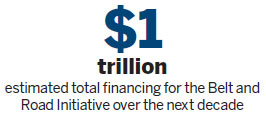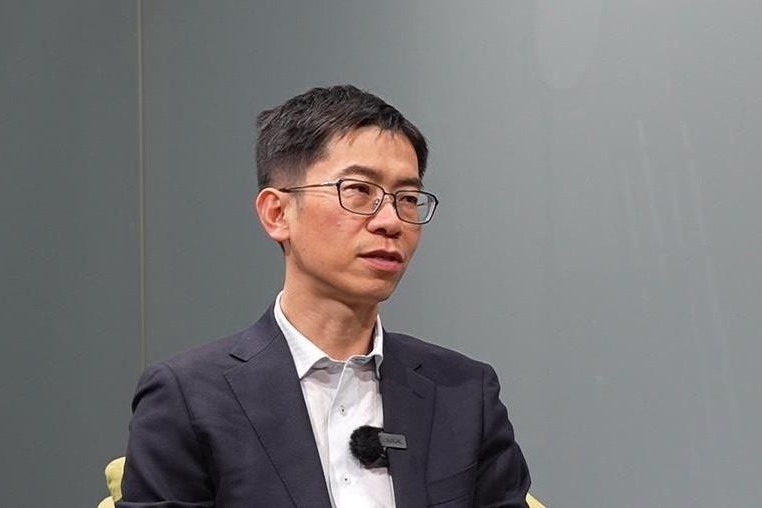Belt, Road needs a rulebook

Managing regulation associated with infrastructure deals is essential to ensure investor confidence, Standard Chartered Chairman says
China's Belt and Road Initiative will provide great connectivity for trade, ideas and capital between Asia and Europe, but setting up a solid regulatory framework for investment deals is the key to ensure success, says John Peace, chairman of Standard Chartered Bank.
Opportunities for Western firms to participate in the initiative will be much more wide-ranging than the infrastructure sector itself, including areas like architecture and financial services, he says.
| John Peace, chairman of Standard Chartered Bank, says the Belt and Road Initiative will increase trade globally and boost the global economy. Provided to China Daily |
The strategy, he says, "will increase trade globally and give the global economy a boost at this time. It is something that would be beneficial not just for Britain and China, but also many other countries, particularly those who would be impacted".
The initiative, proposed by President Xi Jinping when he visited central and southeast Asia in October 2013, consists of the Silk Road Economic Belt and the 21st Century Maritime Silk Road.
China has already deployed funds totaling around $100 billion, consisting of $40 billion for the Central Asia-focused Silk Road Fund, $50 billion for a new Asian Infrastructure Investment Bank, and $10 billion for the BRICS-led New Development Bank.
The initiative spans 65 countries, with a total population of 4.4 billion, which is over 60 percent of the world's population, and together they account for only 29 percent of the global economy. Their total trade with China exceeded $1 trillion last year, one fourth of China's total trade value.
Peace says Asia's need for infrastructure will be great over the next decade, as countries seek to move up the value chain while absorbing fast-growing populations.
According to Standard Chartered's estimates, official financing for the initiative could reach $1 trillion in the next decade, which may also increase demand for crude steel by 200 million metric tons in 10 years, or 20 percent of China's annual production capacity.
The initiative may accelerate China's shift from being the world's biggest goods exporter to a major capital exporter. In recent years, China's outward direct investment has grown rapidly, with cumulative ODI totaling $744 billion last year, up from only $246 billion in 2009.
Since 2006, China's outward investment has grown 24 percent annually on average, quickly catching up with inward direct investment. According to official forecasts, China's outward direct investment will total $1.25 trillion in the next 10 years.
Some of these are committed already. On a visit to Pakistan in April, Xi announced $46 billion in investments and credit lines as part of a planned China-Pakistan economic corridor.

Although the United Kingdom is not officially on a map released last year by the state-run Xinhua News Agency of areas within the initiative, Peace says that there are still many ways the UK could participate. He says he thinks the map should be redrawn to include the UK, which could help significantly increase the country's trade and investment links with Asia.
Peace says London could be a crucial location for infrastructure financing, given that the city is already a leading Western center for offshore renminbi activities. The city's banks have expertise to structure deals along Belt and Road routes, and many international investors.
London's deep pool of offshore renminbi capital could be helpful. He also expects such deals to match the risk-return tolerance of London-based investors.
"Many people are taking the long-term view, such as pension funds, who think ahead 20 to 30 years, so they would be interested in infrastructure deals. However, there has to be the right balance between risk and reward."
Managing the regulatory framework associated with these infrastructure deals is essential in ensuring investor confidence. Governments and regulators would need to carefully examine the amount of capital that projects demand from participating banks and their shareholders as a deposit so that they are not discouraged.
Political leaders, central banks and regulators all have a significant role to play. "The British and Chinese governments have a role to show political will to support and encourage these projects, including the importance of regulation. There needs to be a consistent regulatory framework."
Once the regulatory framework is set, commercial banks would help clients assess risks.
The public-private model, where government agencies and private investors jointly fund projects, is commonly used in the UK. While accompanying British Chancellor George Osborne on his China trip in September, Peace shared his views and expertise on this model with partners in China.
"The discussions we had in Beijing are a good starting point. Chinese, UK and European banks can work more closely together on projects funded with this model. However, adapting it will be key," he says.
Peace says another important connection to be created is a digital one, as illustrated by increasing e-commerce between the continents. Other UK sectors that could benefit from working with China include construction planning, services, design, engineering, supply and manufacturing.
cecily.liu@mail.chinadaily.com
(China Daily European Weekly 12/11/2015 page21)
Today's Top News
- Japan tempting fate if it interferes in the situation of Taiwan Strait
- Stable trade ties benefit China, US
- Experts advocate increasing scope of BRI to include soft power sectors
- New engine powers cargo drone expansion
- China to boost green industry cooperation
- Manufacturing PMI rises in November































